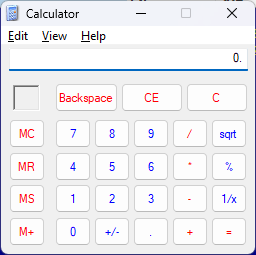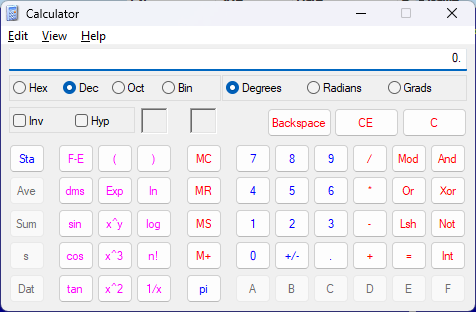This is a bunch of random notes from running Procmon on Win11_24H2 build.
We all know about autorun.inf that OS is checking when we attach a new device to the system, but on new devices the system is actually looking for more files — here’s the list:
- \Device\HarddiskVolumeN\audio_ts\audio_ts.ifo
- \Device\HarddiskVolumeN\autorun.inf
- \Device\HarddiskVolumeN\AVCHD
- \Device\HarddiskVolumeN\BDAV
- \Device\HarddiskVolumeN\BDMV
- \Device\HarddiskVolumeN\bootex.log
- \Device\HarddiskVolumeN\DCIM
- \Device\HarddiskVolumeN\desktop.ini
- \Device\HarddiskVolumeN\dvd_rtav\vr_mangr.ifo
- \Device\HarddiskVolumeN\EFI\Microsoft\Boot\BCD
- \Device\HarddiskVolumeN\EFI\Microsoft\Boot\BCD.LOG
- \Device\HarddiskVolumeN\EFI\Microsoft\Boot\Policies\UnlockToken.pol
- \Device\HarddiskVolumeN\PRIVATE\AVCHD
- \Device\HarddiskVolumeN\Recovery.txt
- \Device\HarddiskVolumeN\SVCD\entries.svd
- \Device\HarddiskVolumeN\SVCD\entries.vcd
- \Device\HarddiskVolumeN\System Volume Information
- \Device\HarddiskVolumeN\System Volume Information\AadRecoveryPasswordDelete
- \Device\HarddiskVolumeN\System Volume Information\ClientRecoveryPasswordRotation
- \Device\HarddiskVolumeN\System Volume Information\FveDecryptedVolumeFolder
- \Device\HarddiskVolumeN\VCD\entries.vcd
- \Device\HarddiskVolumeN\video_ts\video_ts.ifo
- \Device\HarddiskVolumeN\WinReOfflineScanningResult.dat
Some of them are obviously media-related, some are Windows Backup-related, and some … I have no clue.
The other interesting bit is that when executed, lsass.exe is trying to load a phantom DLL named “”.dll:
- C:\Windows\””.DLL
- C:\Windows\System\””.DLL
- C:\Windows\System32\””.DLL
While it looks like an attractive proposition, I am not sure if there is a way to exploit it 🙁 Still, need to come back to it to understand why the process is doing so. Perhaps there is a new data dumping opportunity here, somewhere…
There are a lot of new phantom DLLs, but they are tricky to play with. While writing this post I messed up this build’s booting so many times that I no longer understand which of these test phantom DLLs I added to the system contributed to the damage 🙂 I have added a list of potentials at the bottom of this post.
Then there is smss.exe trying to find these:
- C:\Windows\apppatch\drvpatch.sdb
- C:\Windows\System32\wowarmhw.dll
- C:\Windows\System32\xtajit.dll
- C:\Windows\System32\xtajit64.dll
- C:\Windows\System32\xtajit64se.dll
- C:\Windows\SysWOW64\wow64.dll
- C:\Windows\SysWOW64\wow64base.dll
- C:\Windows\SysWOW64\wow64con.dll
- C:\Windows\SysWOW64\wow64win.dll
- C:\Windows\SysWOW64\xtajit64.dll
- C:\Windows\SysWOW64\xtajit64se.dll
Then spoolsv.exe trying to access these:
- C:\Windows\System32
- C:\Windows\System32\spool
- C:\Windows\System32\spool\drivers
- C:\Windows\System32\spool\drivers\ARM64
- C:\WINDOWS\system32\spool\drivers\ARM64\3\New\
- C:\WINDOWS\system32\spool\drivers\ARM64\3\Old\
- C:\WINDOWS\system32\spool\drivers\ARM64\4\New\
- C:\WINDOWS\system32\spool\drivers\ARM64\4\Old\
- C:\Windows\System32\spool\drivers\IA64
- C:\WINDOWS\system32\spool\drivers\IA64\3\New\
- C:\WINDOWS\system32\spool\drivers\IA64\3\Old\
- C:\Windows\System32\spool\drivers\W32X86
- C:\Windows\System32\spool\drivers\W32X86\3\New
- C:\Windows\System32\spool\drivers\W32X86\3\Old
- C:\Windows\System32\spool\drivers\x64
- C:\Windows\System32\spool\drivers\x64\3\New
- C:\Windows\System32\spool\drivers\x64\3\Old
- C:\WINDOWS\system32\spool\drivers\x64\4\New\
- C:\WINDOWS\system32\spool\drivers\x64\4\Old\
- C:\Windows\System32\spool\PRINTERS
- C:\Windows\System32\spool\SERVERS
- C:\Windows\System32\ualapi.dll
- C:\Windows\System32\vfprint.dll
There seems to be a lot of cross-architectural code logic present here that needs further exploration.
There also seem to be more phantom DLL loading opportunities that are only available under specific conditions:
- C:\Windows\System32\Unknown.DLL (loaded by svchost.exe when AFAICT there is no network connectivity)
- C:\WINDOWS\SYSTEM32\windowsdefender:\.DLL – a potential phantom DLL but impossible due to file/ADS naming limitations
And finally, there is really a lot of paths the OS is trying to access in the procmon log that suggests some incoherent environment variable parsing:
- C:\Windows\System32\%ProgramFiles(arm)%
- C:\WINDOWS\system32\%systemroot%\system32\wbem\cimwin32.dll
- C:\WINDOWS\system32\%systemroot%\system32\wbem\wmipcima.dll
- C:\WINDOWS\%WINDIR%\System32\SPP\Migration\sppgenmig.dat
- C:\WINDOWS\%WINDIR%\System32\SPP\Migration\sppmig.dat
- C:\Windows\System32\%SystemRoot%\ProgramData\Microsoft\Windows\AppRepository\Packages\MicrosoftWindows.Client.AIX_1000.26100.29.0_x64__cw5n1h2txyewy\ActivationStore.dat
- C:\Windows\SystemApps\Microsoft.Windows.StartMenuExperienceHost_cw5n1h2txyewy\%SystemRoot%\ProgramData\Microsoft\Windows\AppRepository\Packages\MicrosoftWindows.Client.AIX_1000.26100.29.0_x64__cw5n1h2txyewy\ActivationStore.dat
- C:\WINDOWS\%WINDIR%\System32\SPP\Migration\sppgenmig.dat
- C:\WINDOWS\system32\%systemroot%\system32\wbem\wmiprov.dll
- C:\Users\<USER>\Desktop\%1
- C:\Users\Public\Desktop\%1
That’s a lot of sideloading and potential LPE vulns to explore…
The full list of possible phantom DLLs can be found here (win11_24H2_phantom_dlls.txt). Some of them are obvious path problems, but many are real phantom DLLs.

